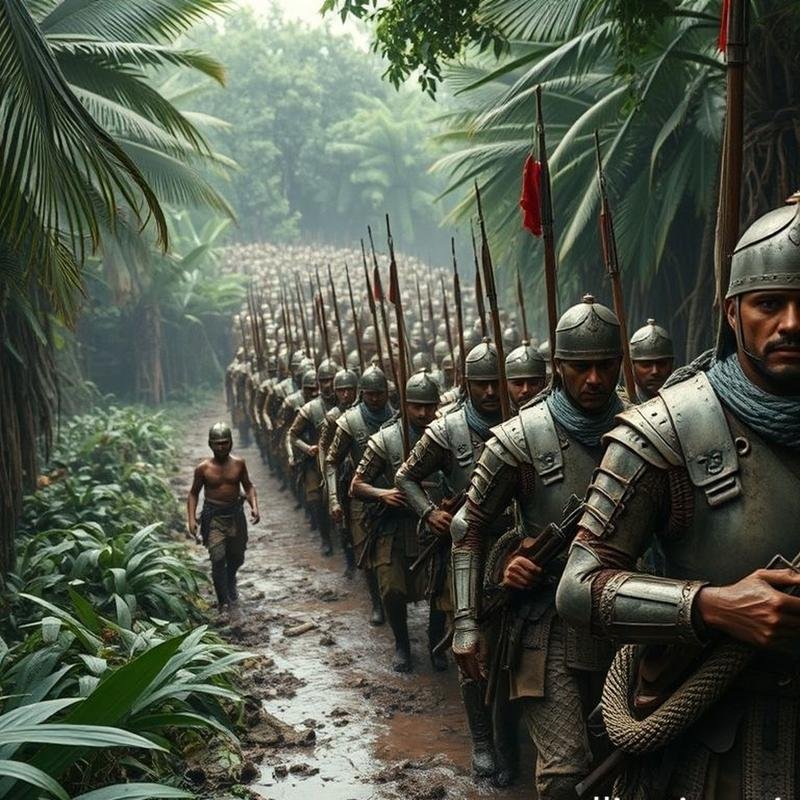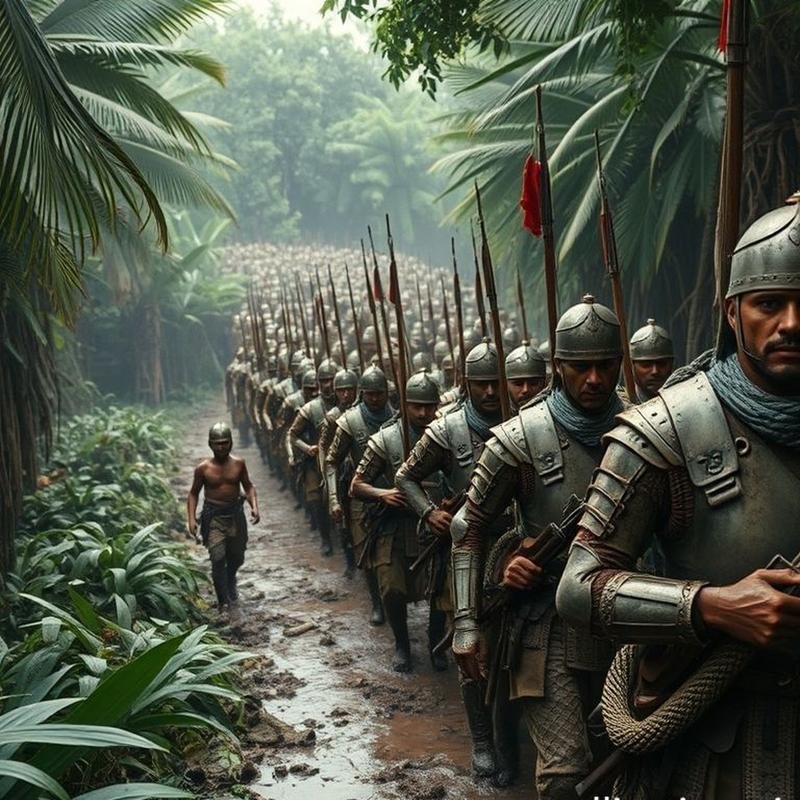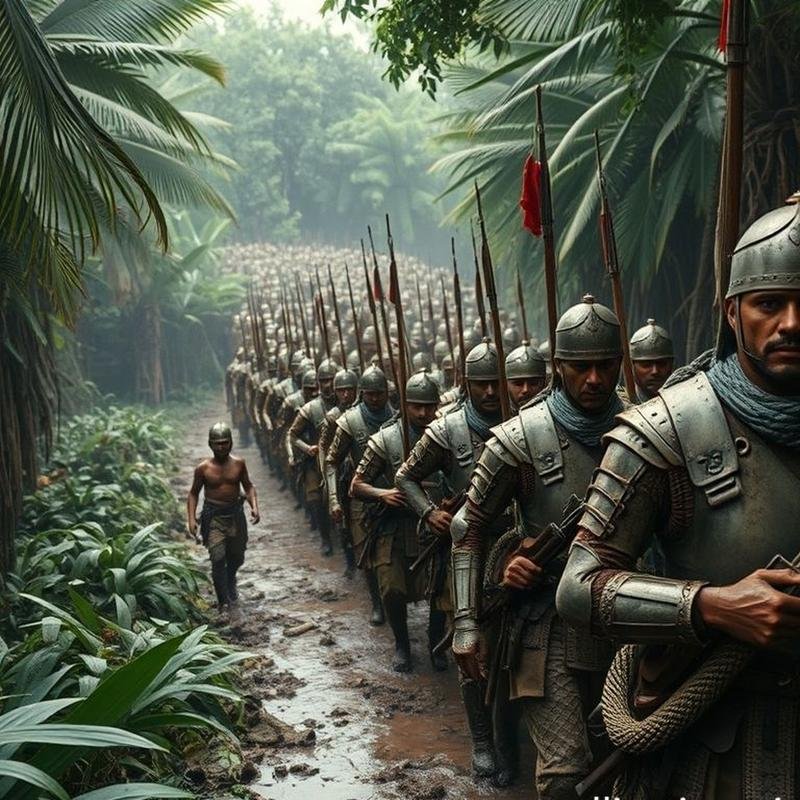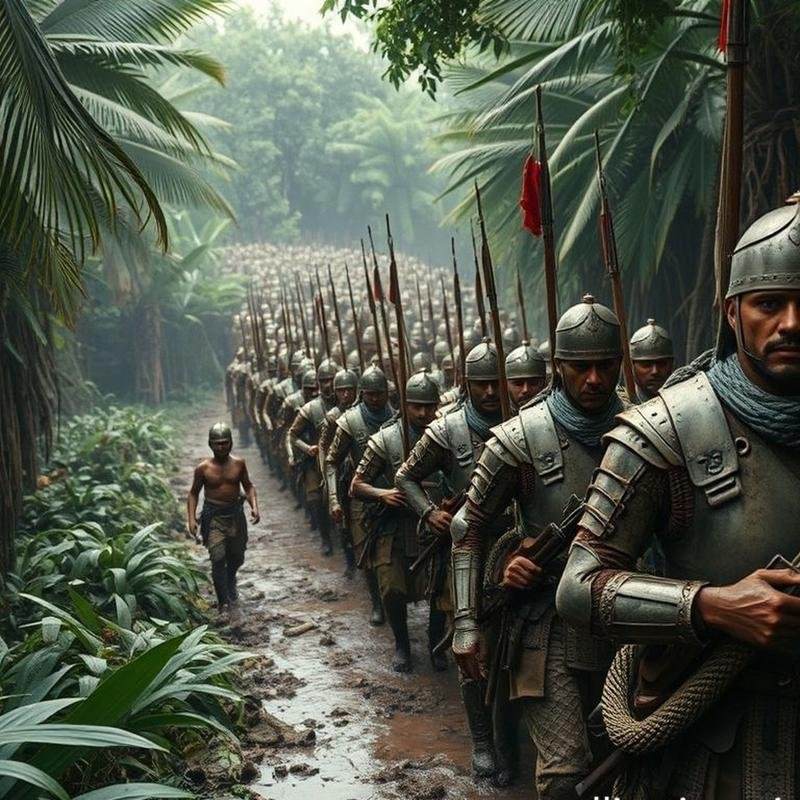El Dorado: Lost City of Gold or Delusion of Greed?

El Dorado: Gold, Greed, and the Lost City Legend
Is Eldorado a dream or a curse? Was this legendary city of gold, which ignited avarice in the hearts of conquerors, merely a distorted reflection of their own greed, projected onto the canvas of myth? This documentary delves into the enduring legend, revealing how Europeans exploited indigenous narratives, transforming an innocent aspiration into a harrowing saga of greed and bloodshed. We will retrace the steps of gold-obsessed explorers, not to seek treasure, but to uncover the underlying truth behind the legend’s allure.
The Muisca People and the Sacred Rituals
From the heart of Colombia, nestled in the Andes Mountains, emerges the authentic story behind the Eldorado legend. Here, between the 6th and 16th centuries AD, the Muisca people established a sophisticated agricultural society where gold was not merely a resource, but an integral element of their spirituality.
Envision Lake Guatavita, a mirror reflecting the sky, a stage for sacred rituals. Here, a new leader underwent a transformation into the Golden Man. His bare skin, coated in shimmering gold dust, became a living offering. He plunged into the sacred waters as his followers cast treasures of gold and emeralds into the depths, pledging allegiance and reverence to their gods, to the life-giving sun.
Gold transcended its material value; it was a sacred symbol, embodying the sun’s power and humanity’s connection to the cosmos. These rituals, documented by the historian Juan Rodriguez Freyle in the 17th century, captivated the Spanish conquistadors, transforming a spiritual symbol into a feverish obsession with greed and power. This obsession drove them to desperate attempts to drain the lake, a relentless pursuit of a lost city of gold, blinding them to the true treasure they sought.
The Conquistadors’ Quest and the Battle of Bogotá
This dream evaporated in the swamps, leaving a bitter residue of disappointment. After tales of the Muisca’s mysterious rituals ignited their imaginations, Gonzalo Jiménez de Quesada departed from Santa Marta in 1536 with a substantial army. Hundreds of Spanish soldiers, and thousands of subjugated indigenous people, marched under the burden of heavy supplies and equipment. Over a year of relentless hardship ensued, with death lurking at every turn, disease taking its toll, and fierce battles erupting as tribes valiantly defended their land. Each step brought them closer to despair, but the deceptive glimmer of gold sustained the flame of greed within them.
In 1537, Quesada finally reached the Muisca territories, an advanced society, only to face a bitter and protracted conflict. The Battle of Bogotá in April 1538 marked a bloody culmination, resulting in a crushing defeat for the Muisca and the brutal seizure of their lands and precious treasures. Quesada founded the city of Santa Fe de Bogotá, establishing it as the center of absolute Spanish control and a symbol of a new era of brutal exploitation.
Lake Guatavita: A Mirror of Dreams and Greed
However, Eldorado remained an elusive mirage. Despite the vast quantities of gold and emeralds that were plundered, the legendary golden city never materialized. Attention then turned to Lake Guatavita, that shimmering blue expanse perched high in the Andes Mountains, at an altitude of over three thousand meters. Here, in this magical and remote location, legends intertwined with tangible realities, forming a mirror reflecting both fantastical dreams and insatiable greed.
Guatavita was more than just a lake for the Muisca people; it was a heart pulsating with profound spirituality, and a stage for sacred ceremonies that embodied the essence of their beliefs. Here, the new leader would cover his body with pure gold that shone under the sun, then plunge into the sacred waters, offering treasures of gold and emeralds as a solemn sacrifice to the gods, a ritual that embodied the delicate balance between humanity and the grandeur of nature.
It was not long before the echoes of these majestic rituals reached the ears of the gold-obsessed Spanish conquistadors. Lázaro Fonte, an ambitious Spanish merchant driven by avarice, made a desperate attempt to drain the lake in 1545, achieving partial success and uncovering a significant quantity of glittering gold, further fueling the legend’s allure in the hearts of the covetous. He was followed decades later by Antonio de Sepúlveda, who continued the diligent excavation and exploration, discovering more priceless buried treasures.
Yet, Guatavita stubbornly refused to reveal all its hidden secrets. In the 19th century, the ambitions of an English company to drain the lake were thwarted by the harsh realities, leaving behind significant environmental damage and conclusive evidence that some mysteries remain unsolved.
Eldorado in Literature and Cinema
Eldorado not only appeared on explorers’ maps, but also subtly infiltrated the pages of literature and the screens of cinema, becoming a mirror reflecting our aspirations and hidden obsessions. Voltaire, in his 1759 novel Eldorado, envisioned a utopian city in the heart of South America, a sanctuary from the corruption of Europe, where wisdom flourished in harmony with nature. A century later, Edgar Allan Poe wove threads of despair and hope in his poem Eldorado, where a tireless knight continued his arduous quest, even in the face of certain death, for that elusive city. In the world of cinema, the legend has been portrayed through contrasting and evocative imagery. Herzog’s Aguirre, the Wrath of God, in 1972, presented a bleak vision of a feverish expedition in the Amazon jungle, inspired by Pizarro’s bloody campaign, where blind greed leads to utter madness. In stark contrast, the animated film The Road to Eldorado in 2000 added a charming comedic touch to the legend, transforming the search for gold into an unforgettable adventure of friendship.
Modern Explorations and Discoveries
While the echoes of the Spanish conquistadors’ footsteps have faded, the allure of Eldorado persists. In the modern era, with the advancement of technology, researchers have returned to the Amazon jungle, driven by the desire to locate the lost golden city. In 2000, British archaeologist Jeremy Clarkson embarked on an expedition to the heart of the Amazon rainforest, equipped with satellite imagery and advanced LiDAR technology. His aerial survey revealed promising ground structures, hidden beneath the dense vegetation, sparking speculation about the remnants of the Eldorado civilization. His efforts were not merely excavation, but a quest to understand how an advanced society could thrive in such a challenging environment. Elsewhere in South America, discoveries began to reveal similar evidence. In 2017, researchers from the University of Exeter discovered two hidden cities in the Amazon, with complex squares and structures, indicating the existence of an advanced civilization that predated the arrival of the Europeans. These discoveries, along with the ancient networks of roads and canals found in Bolivia, offer glimpses of sophisticated societies that may have inspired the legend of Eldorado.
The Enduring Legacy and Cultural Impact
However, the legacy of Eldorado extends beyond maps and failed expeditions, permeating various aspects of life and leaving a distinct imprint on culture and creativity. In literature, the legend inspired writers and poets, including Sir Walter Raleigh, who fueled the dream of potential wealth in the New World by describing Eldorado in his book The Discovery of Guiana in 1596. In cinema, Werner Herzog’s Aguirre, the Wrath of God, which vividly portrays the madness of the search for Eldorado and its devastating impact on explorers, stands out, revealing how greed can drive humanity to the brink of destruction. The term Eldorado has become synonymous with any place that promises wealth or happiness, a testament to the legend’s enduring influence in modern language and culture. Yet, behind this alluring promise lies a history of exploitation and violence. The legend of Eldorado served as a pretext for colonizing vast areas of South America, where European explorers established colonies in the hope of acquiring riches, disregarding the rights of indigenous peoples and their ancient heritage. Gonzalo Pizarro’s campaign in 1541, for example, was not merely a search for gold, but a conquest that claimed countless lives, depleted resources, and destroyed entire communities.
Greed vs. Ambition: A Dichotomy
So, what have we learned from the legend of Eldorado? Is it simply a tale of an elusive dream of wealth, a mirage that appears on the horizon only to vanish as we approach? Or does it reflect a deeper aspect of human nature, the unbridled desire for adventure and exploration of the unknown, even at the expense of others? It is a story about the dichotomy of greed versus ambition. While ambition led Francisco de Orellana to explore the Amazon River, acknowledging that glory was his ultimate goal, that same ambition often transformed into blinding greed. Greed, as the saying goes, blinds the eyes and deafens the ears, a phenomenon clearly manifested in Gonzalo Pizarro’s 1541 campaign, which led him and his army to ruin in their feverish pursuit of gold.
Eldorado Today: A New Gold Rush?
But is Eldorado truly over? Has this relentless pursuit of wealth at any cost come to an end? The answer is unequivocally no. Today, we are witnessing a new gold rush, not necessarily for physical gold, but for cryptocurrencies. The cryptocurrency mining market, valued at billions of dollars, consumes vast amounts of energy, threatening the environment and exacerbating the climate crisis, much like the California gold rush in the 19th century, which resulted in environmental devastation and the displacement of indigenous populations. Are we still not searching for the city of gold? The global financial crisis of 2008, and the widespread economic devastation it caused, was a modern embodiment of the Eldorado rush, where many sought illusory wealth, ultimately paying a heavy price. Today, the cryptocurrency market, valued at trillions of dollars, represents a new temptation for quick gains, a digital dream of Eldorado. But is this gold real, or simply a bubble waiting to burst?
The global self-improvement industry, valued at billions of dollars, promises us success and happiness, but is it truly a path to genuine contentment, or just another illusion to
Video Documentary








